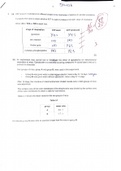College aantekeningen
Finance and healthcare purchasing - master health science UT
- Instelling
- Universiteit Twente (UT)
Samenvatting / college aantekeningen van het vak 'finance and healthcare purchasing'. Dit is een vak die wordt gegeven voor de master health science op de Universiteit Twente. Het is een onderdeel van de track 'Optimalization of healthcare processes'
[Meer zien]





